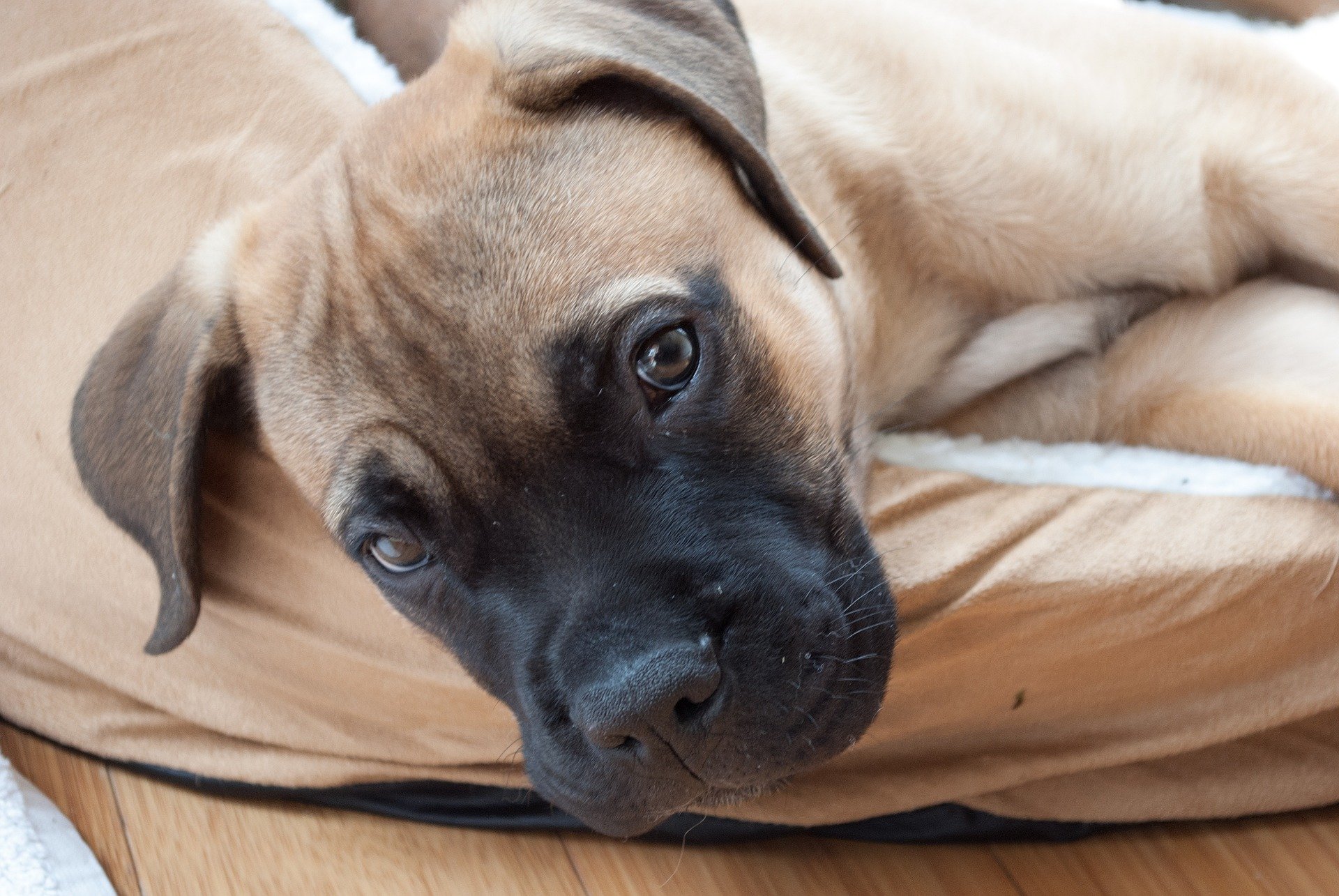Having a large dog around is like having one’s best friend, and you’ll like to have him around you.
Large dogs are now in trend as many pet lovers are looking forward to having huggable dogs.
Since the Mastiff dogs are among the Big dog breeds, the varieties of Mastiff dogs are in high demand now.
If you are considering getting one, then make sure you have the facts ready.
Characteristics of Mastiff dog breed
The Mastiff dogs might be large but they do not seem to be aware of that.
They’re agile and flexible and often, you might spot them on the couch or looking for the owner’s lap.
They are very protective of the owner and are patient. Because of this, they become one of the best choices for watchdogs and a good choice for families.
If you have a backyard, then the dog will stay there happily. This also explains that the Mastiff dog breed might not be a good choice for those living in the apartments.
These dogs should be regularly entertained and played with. They will need regular exercise which should consist of daily walks too.
Mastiff dogs often love to chew things and that could be destructive. So, if you want your Mastiff dog to be busy, throw him a bone or buy some indestructible dog toys for heavy chewer like the mastiff.
Since this dog breed can easily weigh up to 180 pounds, it is always safe to get the backyard as well as the house covered by a dog-proof fence.
Ensure the dog will not be able to dig under the fence or climb the fence top.
While regular exercise might be a requirement, mastiff dog is considerably lazy. So, this is not good for a lazy people who can not do the extra work to motivate them to exercise.
Feeding the Mastiff dogs
Talking about the Mastiff dog breed, they will need constant care and nutrition during their growth stage, how much feed you give to your Mastiff depends on the age and possibly the gender.
Unlike many other dog breeds, feeding mastiffs a good quality diet in the later stages of their life will not bring back the lost nutrition.
To ensure proper growth, a fully balanced diet is essential in the early days. Talk to a vet about the dietary requirements of your dog before finalizing one.
Some canned foods like Fromm Puppy Gold Formula, Canidae Life Stages Large Breed Puppy, Orijen, and Wellness CORE foods for puppies and large dogs can be offered.
Mastiff dog has a very fast growth rate when fed well, especially 3 to 4 times when they are less than four months. when they are over four months, you can spread their food evenly 3 times a day.
You can see them jump up the scale in no time. Keep a note on the diet chart, depending on the age of the dog.
The puppy, which is four to eight weeks old, can eat around 4 cups of puppy food.
In the period of eight to twelve weeks, around five or six cups will do fine.
By the time of twelve to sixteen weeks increase the diet to eight cups for a day.
All these can be divided into three or four meals throughout the day.
By the time they reach the age six months, they can be given around nine or ten cups of food.
After this, the food intake can be balanced between eleven or twelve cups depending upon your dog’s capacity. These meals can be divided into two or three for a day.
Common Health Issues
Most of the health issues with the Mastiff breed are eye related. The following eye diseases are commonly seen in the Mastiff dog breed.
- Retinal Atrophy
- Retinal Dysplasia
- Cataract
- Cherry Eye
- Dysfunctional eyelids
- Corneal Dystrophy
Before choosing a dog for breeding, the owner should be cautious to look for these issues in the dog’s partner.
Hip Dysplasia is another health issue common among mastiffs. Sometimes they are prone to elbow dysplasia too.
If the dog is affected by this disease, then the ill effects will only start to show as they grow older.
Once they reach a certain age, they will be unable to move due to this condition.
Other Common Conditions
Mastiffs are known to have issues related to skin. This is commonly seen around the neck and the facial region as there are a lot of curls around this area.
So infections are quite common if the dog is not properly maintained.
The Mastiff dog breed is also prone to UTI problems. Surprisingly, they get affected by urinary infections much faster when compared with other dog breeds. This condition in Mastiff dogs is termed Cystinuria.
Another common disease that is seen primarily in the Mastiff dog breed is Epilepsy.
Due to its size and massive weight, epilepsy in Mastiff dogs is very difficult to treat.
The dogs which are affected by this disease get bedridden or even die at a very young age.
If the Mastiff Dog is healthy and taken care of properly, then it will live up to a maximum of ten years.
Compared to the other dog breeds, this count might be significantly lower. One reason for this is the massive size of the dog.
Every time the dog moves, it is forced to carry the entire body weight. This leads to strain on the joints and rupture in the bones.
As a result, the dog gets vulnerable to several bone-related diseases and loses its strength over time.








